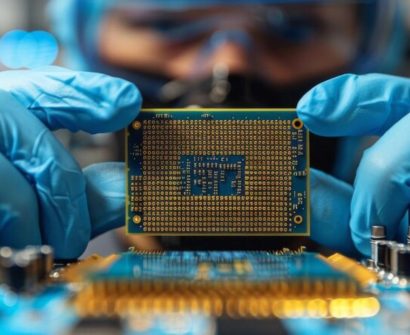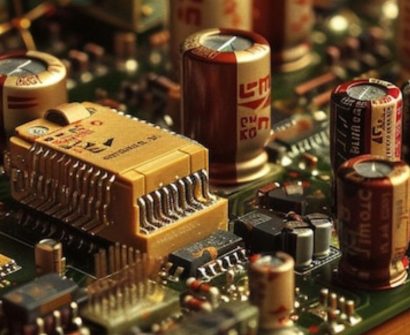
In the world of VLSI (Very Large Scale Integration) design, every component, every architecture, and every innovation holds the potential to redefine the boundaries of what’s possible. Among these, Complex Programmable Logic Devices (CPLDs) stand out as versatile tools that play a crucial role in modern electronic systems. In this blog post, we delve into the intricacies of CPLD architecture, unraveling its inner workings and exploring its significance in VLSI design.
Understanding CPLD Architecture
CPLDs are integrated circuits that contain a large number of logic gates, flip-flops, and programmable interconnections. What distinguishes CPLDs from other programmable logic devices is their hierarchical structure, comprising several programmable logic blocks (PLBs) interconnected through a global routing matrix.
- Programmable Logic Blocks (PLBs): At the heart of CPLD in VLSi architecture are programmable logic blocks. These blocks typically consist of combinational logic elements and flip-flops, offering the flexibility to implement a wide range of digital functions. Each PLB can be configured to perform specific logic operations based on the user’s requirements.
- Global Routing Matrix: The global routing matrix provides the interconnection network that links various PLBs within the CPLD. This matrix allows signals to propagate between different logic blocks, enabling the implementation of complex logic functions. The flexibility of the routing matrix enables efficient utilization of resources and facilitates the routing of signals across the device.
- Input/Output Blocks (IOBs): IOBs serve as interfaces between the CPLD and external components. These blocks provide connectivity for input signals entering the device and output signals exiting the device. IOBs are configurable to accommodate different signal standards and voltage levels, ensuring compatibility with diverse system requirements.
Advantages of CPLD Architecture
The architecture of CPLD in VLSI offers several advantages that make them an attractive choice for VLSI design:
- Flexibility: CPLDs provide a high degree of flexibility, allowing designers to implement custom logic functions tailored to specific applications. The programmable nature of CPLDs enables rapid prototyping and iterative design cycles, facilitating the development of complex electronic systems.
- Scalability: CPLDs are available in various sizes and configurations, ranging from small-scale devices suitable for simple logic functions to large-scale devices capable of implementing intricate designs. This scalability makes CPLDs suitable for a wide range of applications, from consumer electronics to industrial automation.
- Reconfigurability: One of the key features of CPLDs is their reconfigurable nature. Designers can reprogram CPLDs multiple times, allowing for the modification of logic functions without the need for hardware changes. This reconfigurability enables agile design methodologies and facilitates system upgrades and modifications.
- High Performance: Despite their programmable nature, CPLDs offer high-performance capabilities suitable for real-time applications. The hierarchical architecture of CPLDs, coupled with efficient routing resources, enables the implementation of complex logic functions with minimal propagation delay.
Applications of CPLDs in VLSI Design
CPLDs find widespread use across various domains within VLSI design, including but not limited to:
- Embedded Systems: CPLDs are often employed in embedded systems to implement control logic, interface protocols, and signal processing functions. Their flexibility and reconfigurability make them well-suited for adapting to evolving system requirements in embedded applications.
- Communications: In communication systems, CPLDs play a vital role in protocol conversion, signal conditioning, and data processing tasks. Their ability to handle multiple I/O standards and interface with different communication protocols makes them indispensable components in networking equipment and telecommunications devices.
- Test and Measurement: CPLDs are utilized in test and measurement equipment for implementing signal generation, data acquisition, and signal processing algorithms. Their high-performance capabilities and reconfigurable nature make them ideal for adapting to diverse testing requirements in laboratory and industrial settings.
- Automotive Electronics: In the automotive industry, CPLDs are used in electronic control units (ECUs) for vehicle subsystems such as engine management, powertrain control, and safety systems. Their robustness, reliability, and ability to operate in harsh environments make them suitable for automotive applications.
Conclusion
In the realm of VLSI design, CPLDs stand as versatile building blocks that empower designers to realize innovative solutions to complex challenges. With their flexible architecture, reconfigurable nature, and high-performance capabilities, CPLDs continue to play a pivotal role in shaping the landscape of modern electronic systems. As technology advances and application demands evolve, CPLDs are poised to remain indispensable components in the arsenal of VLSI designers, driving innovation and enabling the realization of tomorrow’s electronic devices.
Also Read : fpga architecture in vlsi
To know more about VLSI Course , SuccessBridge VLSI training institute. You can begin your VLSI career by enrolling in the placement-assisted live courses available at SuccessBridge We offer various VLSI online courses. We offer VLSI Physical Design course, Design Verification course, DFT Training , Chip design course many more. Explore VLSI Courses From The Leaders In VLSI Training






